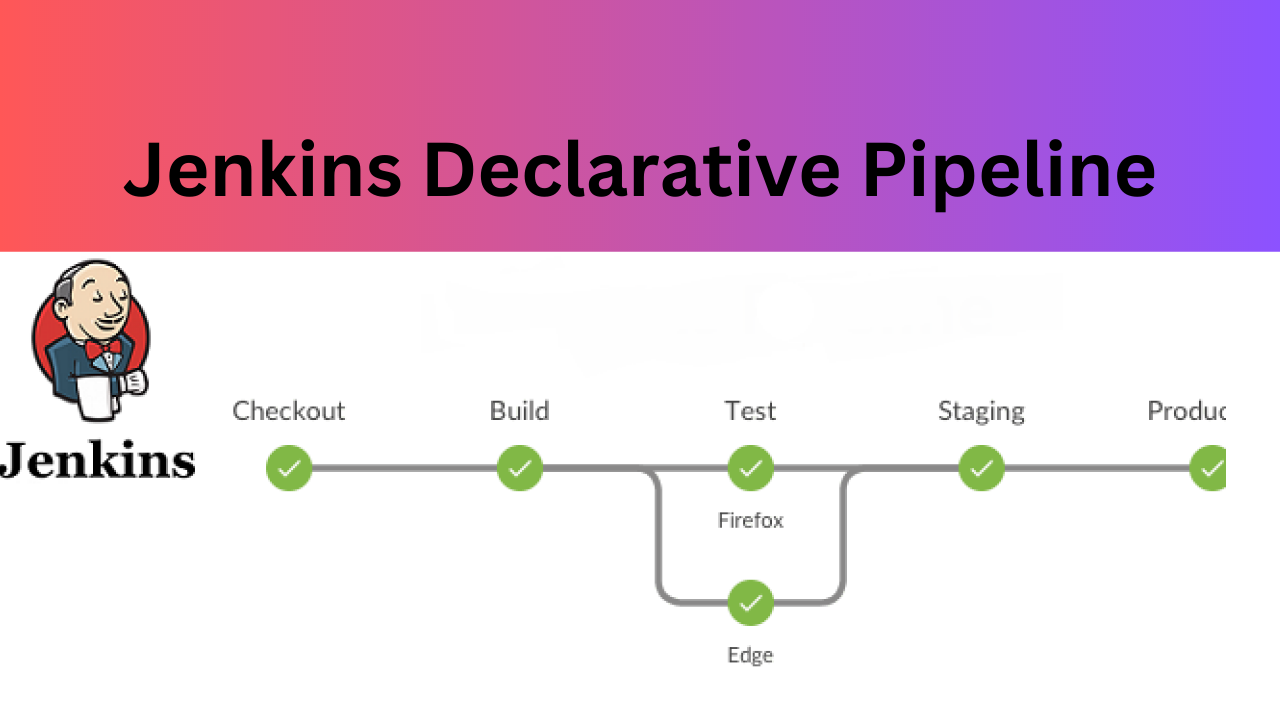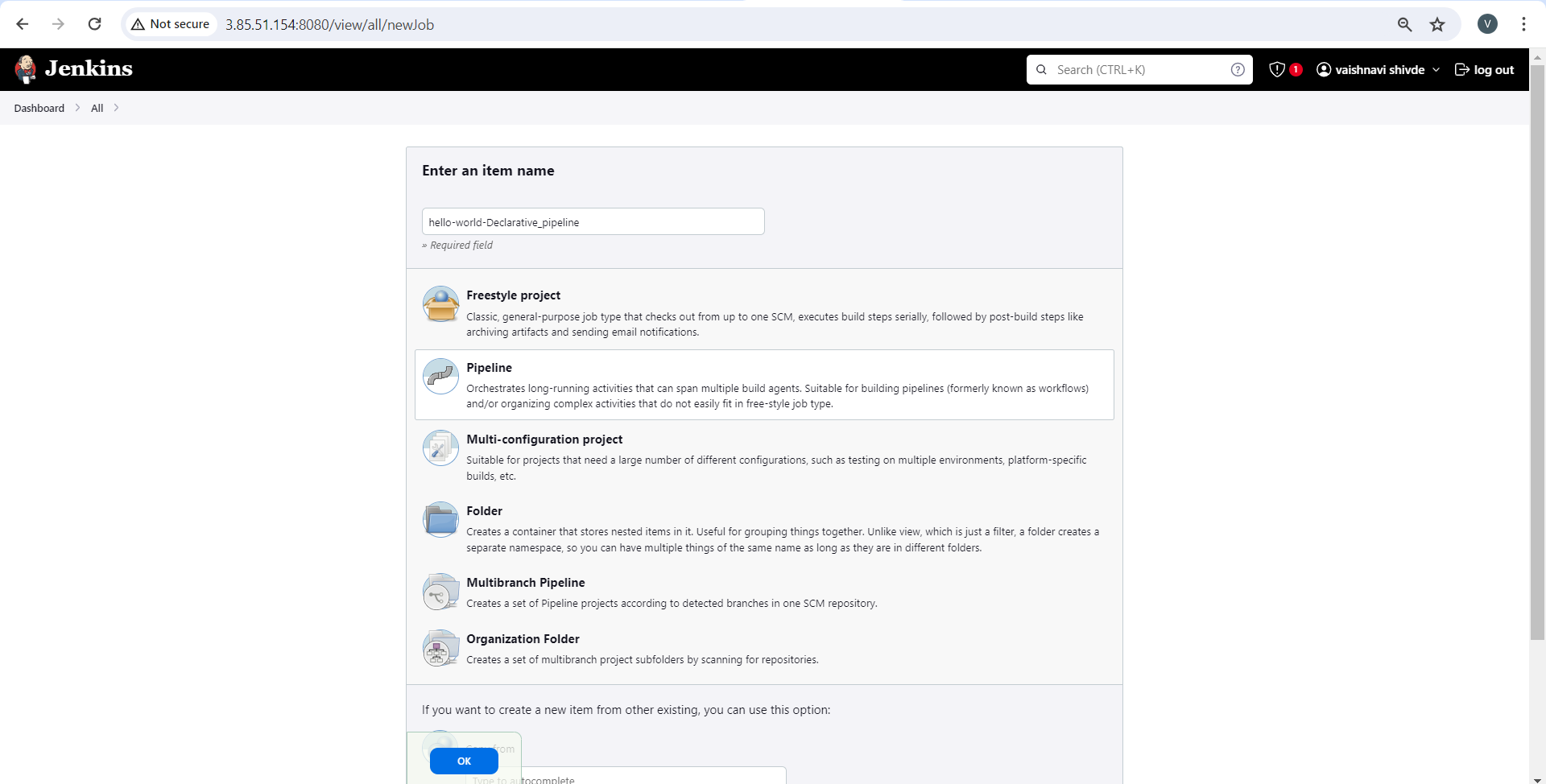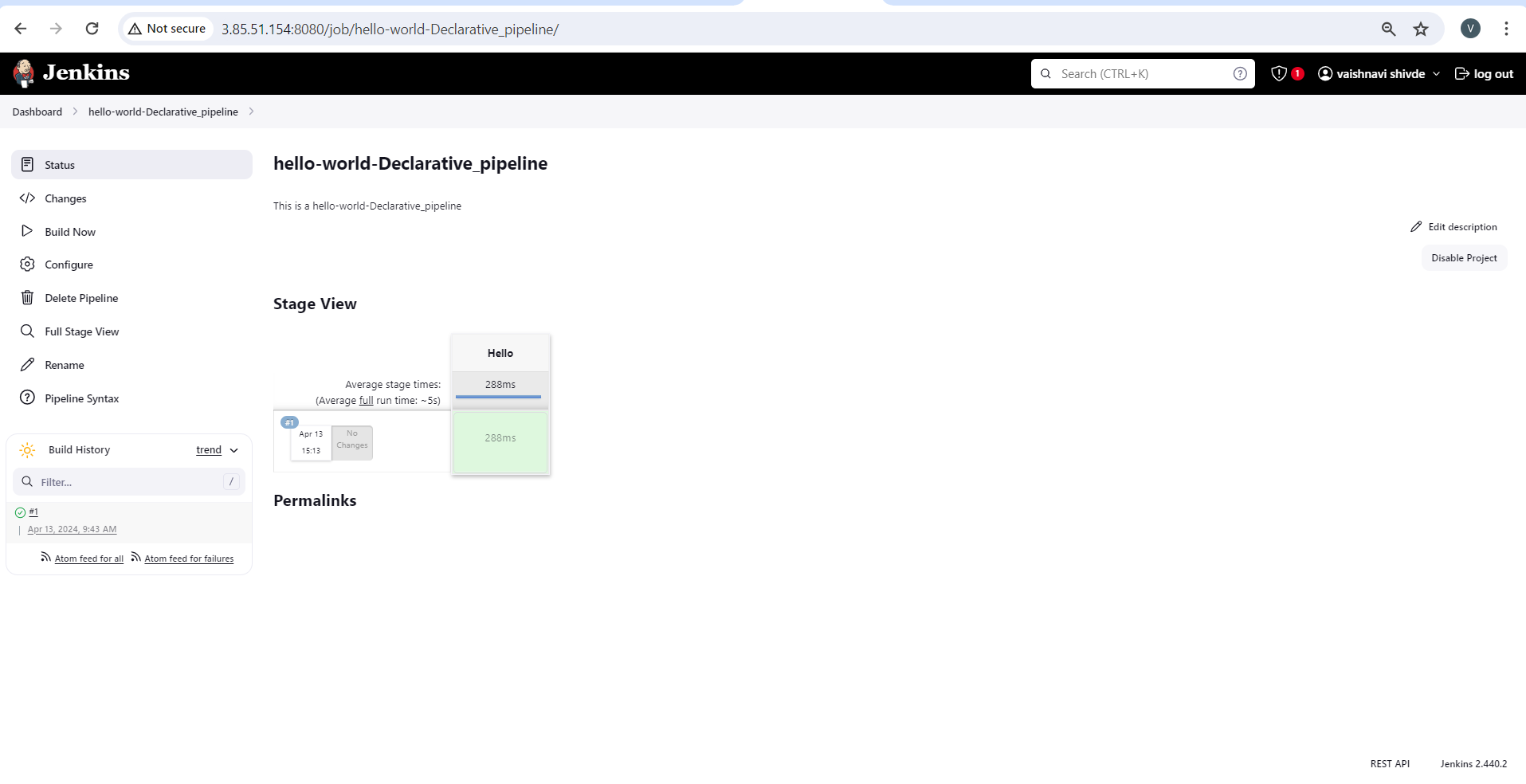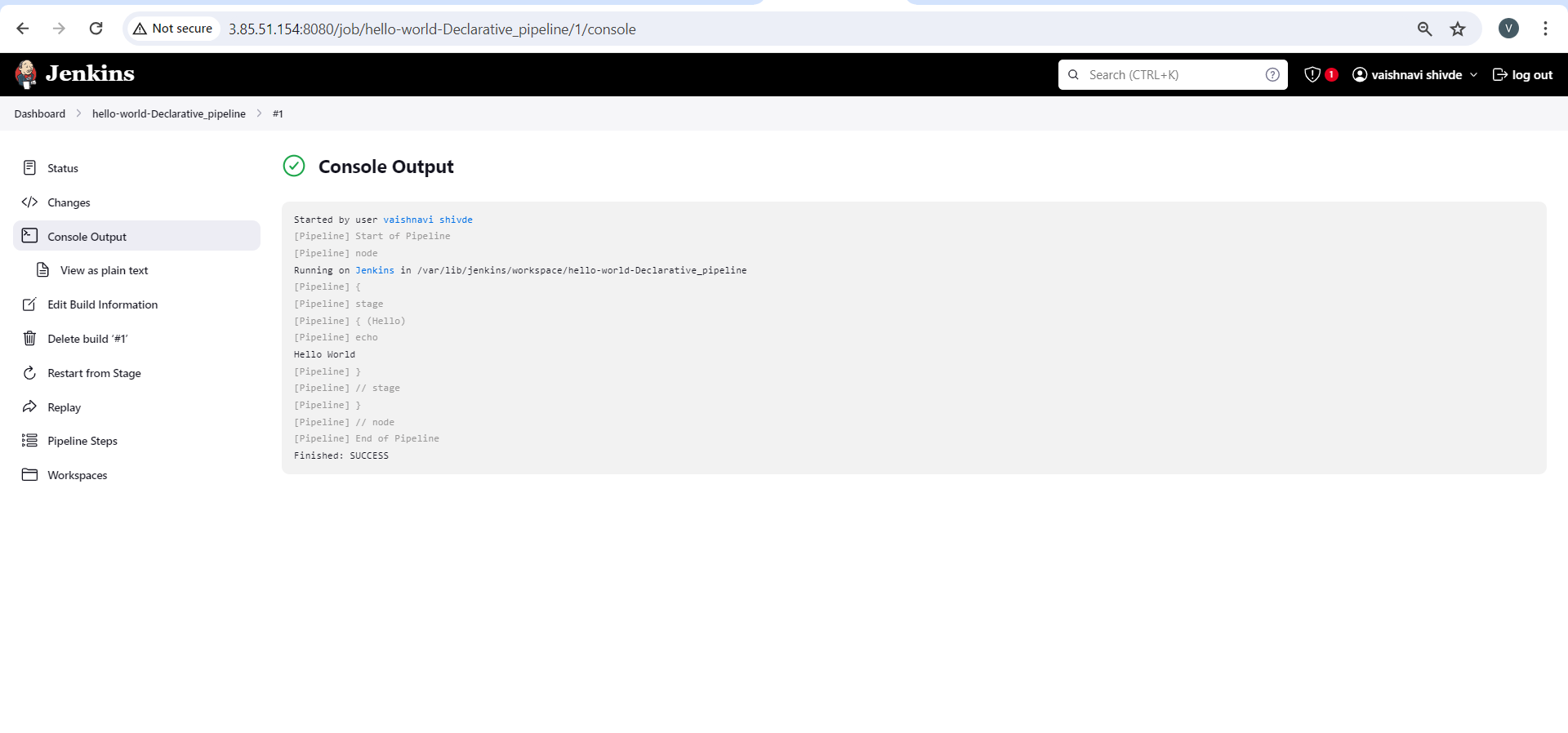Day 26 Task: Jenkins Declarative Pipeline
 Vaishnavi Shivde
Vaishnavi Shivde
What is a Pipeline?
In Jenkins, a pipeline is a set of automated processes that allow developers to build, test, and deploy code efficiently. It's represented as a series of steps, where each step performs a specific task.
Types of Pipelines:
Scripted Pipeline:
Syntax: Written in Groovy scripting language.
Flexibility: Offers greater flexibility and control over the pipeline flow.
node {
stage('Build') {
// Build stage
}
stage('Test') {
// Test stage
}
stage('Deploy') {
// Deployment stage
}
}
Declarative Pipeline:
Syntax: Structured format with predefined sections like
agent,stages, andsteps.Simplicity: Provides a simpler and more opinionated syntax for defining pipelines.
pipeline {
agent any
stages {
stage('Build') {
steps {
// Build steps
}
}
stage('Test') {
steps {
// Test steps
}
}
stage('Deploy') {
steps {
// Deployment steps
}
}
}
}
Why you should have a Pipeline
The definition of a Jenkins Pipeline is written into a text file (called a Jenkinsfile) which in turn can be committed to a project’s source control repository.
This is the foundation of "Pipeline-as-code"; treating the CD pipeline as a part of the application to be versioned and reviewed like any other code.
Creating a Jenkinsfile and committing it to source control provides a number of immediate benefits:
Automatically creates a Pipeline build process for all branches and pull requests.
Code review/iteration on the Pipeline (along with the remaining source code).
Task-01
Create a New Job, this time select Pipeline instead of Freestyle Project.

Follow the Official Jenkins Hello world example

Complete the example using the Declarative pipeline


Subscribe to my newsletter
Read articles from Vaishnavi Shivde directly inside your inbox. Subscribe to the newsletter, and don't miss out.
Written by
Vaishnavi Shivde
Vaishnavi Shivde
Aspiring DevOps Engineer | Linux | Git & Github | Shell Scripting | Docker | CI/CD Jenkins | Kubernetes | AWS | Terraform | JIRA | Python |